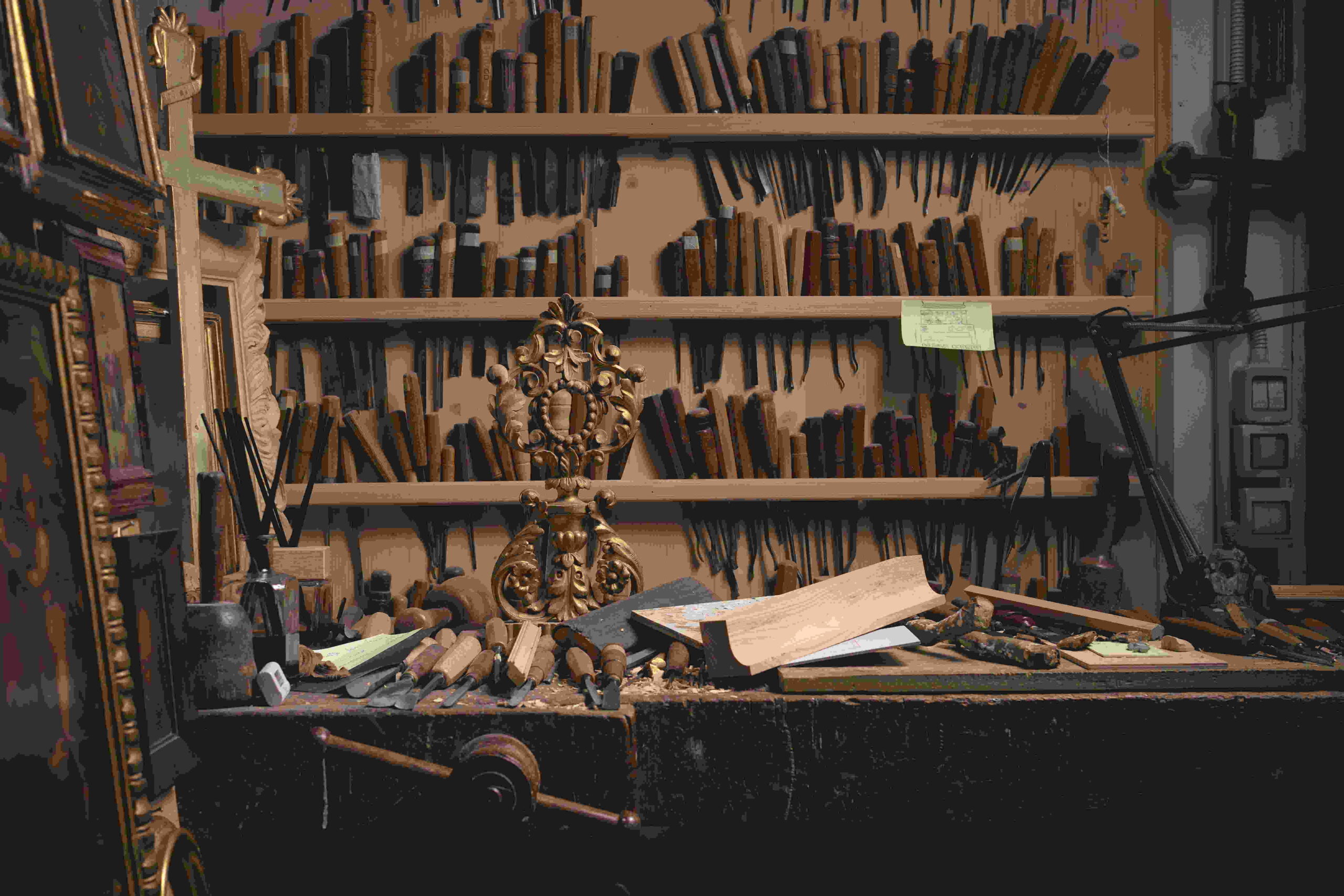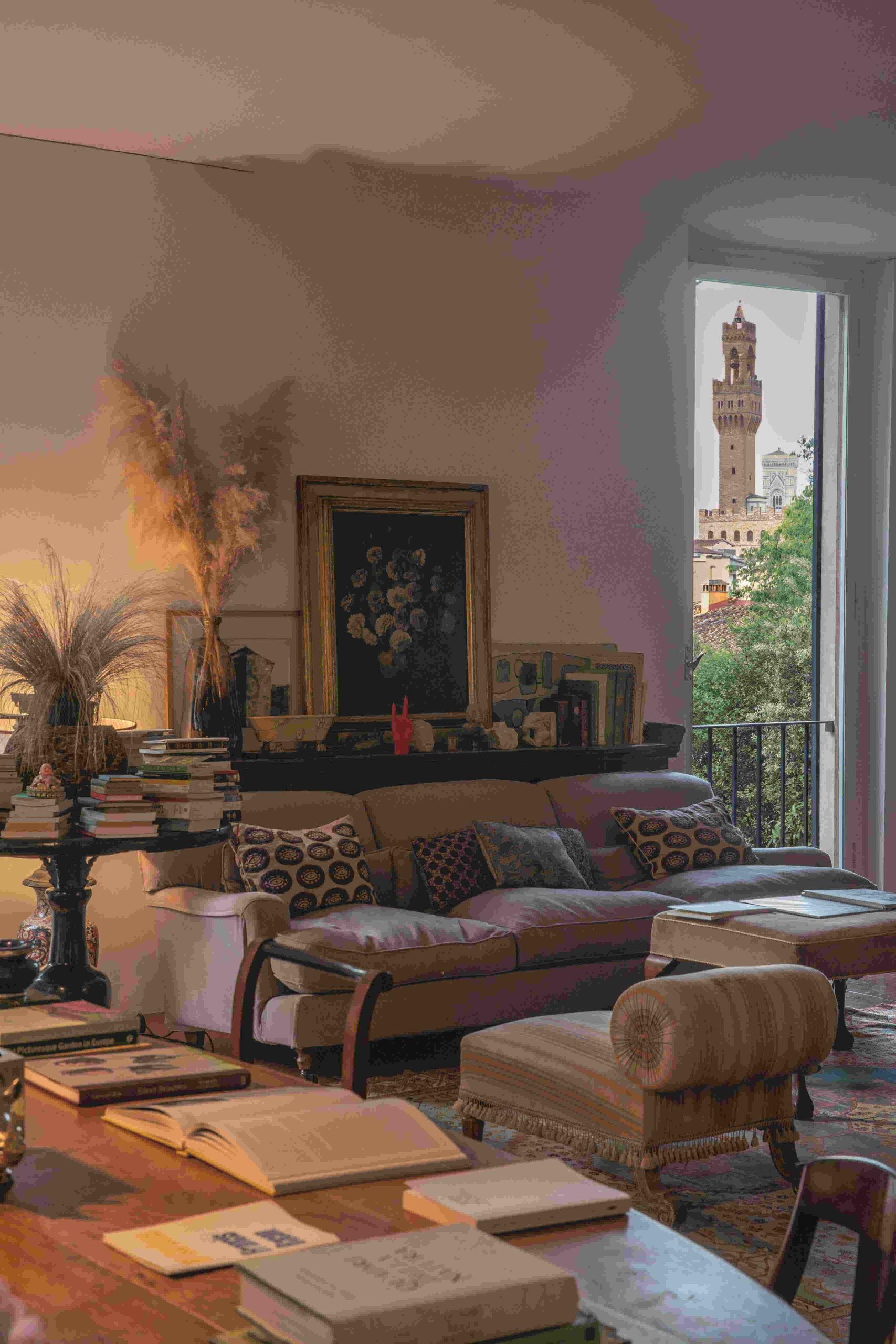Livia Frescobaldi describes her home town, creating an unprecedented itinerary in which history and craftsmanship are mixed with memories and places linked to her own biography. We talked about it with the author
The volume Inside Florence. A Tale of Palazzi and Botteghe by Livia Frescobaldi is published by Marsilio Arte. Enriched by photographs by Alessandro Moggi and Eugenia Maffei, the book contains what the author calls a “sentimental topography”. We talked about it with her.
What intentions and needs were the source of the idea at the heart of the volume? And how did you decide to build the approach that characterises it?
Florence is a city famous throughout the world, synonymous with beauty since the Renaissance, a destination chosen by over 10 million tourists a year, who flock to see universally recognised masterpieces up close, like Michelangelo’s David, Botticelli’s Primavera and Brunelleschi’s dome. In recent years, the trend of having an aperitif at sunset on the Santa Trinita bridge has also become widespread, and dozens of people fill it for the occasion. So the postcard image is more than well-established. As a Florentine, in love with her city, I have instead tried to convey what is behind this wonderful shop window, choosing to do so through some places that are special to me, because they are intimately tied to my life. A combination of houses and shops that allows you to discover different personalities and stories that intertwine, part of the cultural identity of my city. The journey gradually takes place through events connected to my own experience, offering a personal and private landscape, in which authenticity is the common thread. The reader is guided through an exploration of what you could call a “sentimental topography”, echoing a term taken from the preface of Vernon Lee’s book, Genius Loci.
The journey begins in the Santo Spirito neighbourhood, at Palazzo Frescobaldi where I was born and raised surrounded by artisan workshops, that are still active. It continues into the hills surrounding the city centre, to a former Franciscan convent from the mid-nineteenth century, a residence and meeting place of cosmopolitans, where I went to live in my adolescence. Finally, it returns to the area of Santa Croce, on the opposite bank of the Arno River, historically known for fabric dyeing. The references to life in homes and life in workshops are constant. It is the hands of artisans that have created and still preserve the beauty that makes us proud and admired by the rest of the world, as Bruno Munari believed when he stated that “there must be no art detached from life: beautiful things to look at and ugly things to use”.
The connection between the history – architectural, family, social – of a city like Florence and the artisan profession is a key theme. How is it possible to safeguard and showcase that in the context of an era dominated by ever faster processes of production and consumption?
First of all, I believe we need to think of the artisan as a constantly evolving profession, both from a technical perspective and in terms of the dialogue it must establish with the context in which it lives, because the legacy of the past is not enough to guarantee the continuity of the excellence of a product.
That’s why, behind the apparent static nature of these workshops (and historic buildings), actually panta rei, nothing remains still, there is a continuous search for new technological solutions and stimuli, because to stay relevant in the marketplace there’s no time for nostalgia. Furthermore, the clientele is no longer just local but international and the incentive to maintain high quality is even stronger. That is the main challenge: knowing how to update oneself by making tradition a point of strength from which to start and not just something to preserve. The Italian Constitution in 1947 already contained this outlook, specifying in Article 45 that “the law provides for the protection and development of craftsmanship”. In a globalised world where products are ordered online and delivered the next day, the main job is to educate the new generations so they know how to differentiate a handcrafted object from others, to tell the story of who transforms the material and how, in order to arrive at the final result. I am optimistic that even the new generations, which are much more aware than we are of issues of sustainability and recycling to protect the environment, will continue to appreciate craftsmanship and the values it embodies, such as respect for materials, precision, patience, humility, a sense of community and creativity.
The book offers an uncommon itinerary for discovering the city, who is its intended audience?
I wrote this book with all my heart, drawing on my memories and my professional training dedicated to the protection and promotion of cultural heritage, so it is my way of paying tribute to the artisans, whose gestures and voices have been imprinted in my memory since I was a child, and who are protagonists, with equal standing to the owners of the homes, of a world that is still an expression of beauty and values. I am sure that many readers, even from other Italian cities, will see themselves in these stories. I talk about Florence because it’s what I know, but Italy is full of similar examples. I also address Florentines because, as I write in the dedication to my children, we must never become what Ruskin described us as in the second half of the nineteenth century, that is, “unworthy custodians of unappreciated treasures”. With the refined, intense and intimate snapshots of photographers Alessandro and Eugenia, I think that even an audience of aesthetics enthusiasts can be drawn to the book. I hope it will also be a useful guide for those looking for artisan products, thanks to the address book of workshops included at the end of the book. Just like those who love anecdotes and stories will be able to visualise them through images in the places where they took place.
How do you imagine the future of Florence? What is your wish for it?
Tourism will increase in the future in art destinations like Florence, bringing with it benefits and disadvantages that we will have to live with. Hence the need to find solutions that guarantee respect, among other things, for the historical and entrepreneurial identity of a city that has contributed to the growth of Made in Italy throughout the world with excellent products, from fashion to winemaking to industry. If I may express a wish, I would like less centrally located areas of my city to be revitalised, opening up new areas for young talents to develop architectural, artistic, civic and social projects that can be appreciated and experienced by residents and visitors. That way, who knows, perhaps in a few decades we will be able to tell the story of those new places too, and not just of the rightly celebrated historic centre!
Interview by Arianna Testino
BIO
Livia Frescobaldi is Florentine by birth and by choice. She grew up in Florence in Oltrarno, in the Santo Spirito neighbourhood. She discovered her passion for the decorative arts in Paris. Since returning to Florence, she has carried out evaluations of the artistic heritage in some of the most beautiful Italian residences and founded the Associazione Amici di Doccia for the study, protection and promotion of the Manifattura Ginori. She is the curator of exhibitions and author of volumes dedicated to Ginori ceramics, including Gio Ponti. La collezione del Museo Richard-Ginori della Manifattura di Doccia (Imola, 2015) and Il Risorgimento della maiolica italiana: Ginori e Cantagalli (Florence, 2011).


Image captions:
Bottega d’arte Maselli. Photo Alessandro Moggi and Eugenia Maffei
The bedroom was once a frescoed parlor in Palazzo Taddei. Photo Alessandro Moggi and Eugenia Maffei
Palazzo Melenchini. Photo Alessandro Moggi and Eugenia Maffei
The Arnolfo di Cambio tower, Palazzo Vecchio, seen from Ginevra Marchi’s living room. Photo Alessandro Moggi and Eugenia Maffei
Palazzo Canigiani. At the house of Tessa Capponi Borawska. Photo Alessandro Moggi and Eugenia Maffei (cover photo)
Related products
Related Articles












